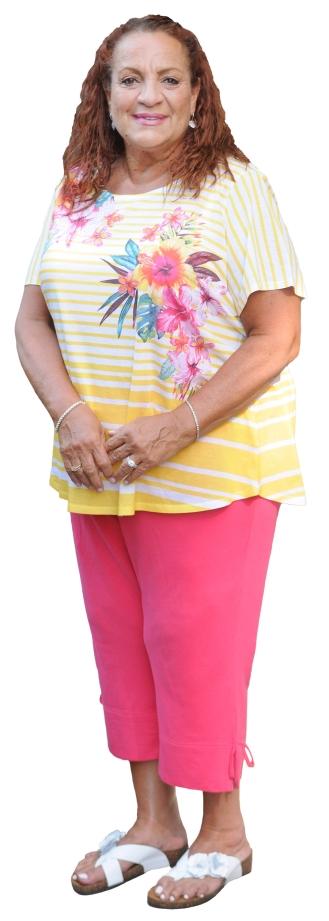
Theresa Aponte is a family child care provider in East New York, Brooklyn, and a “second mother” to children who attend her in-home day care center while their parents work.
Tell me why you became a family child care provider.
I come from a large family, and I always wanted a whole baseball team full of children. But I didn’t have my daughter until I was 35 years old, and there were complications — she has Down syndrome. So I wasn’t blessed with a baseball team. But my sister-in-law was doing day care, and I thought, “That sounds like a good idea.” I love children. When I started, I had only one child for six months, but then my business took off and just grew and grew and grew. I’ve been doing day care for 20 years, and my daughter is now 28 and works with me.
We are a very loving day care. When families drop their children off, we are playing second mothers. Kids run in and hug me; they tell me, “I love you, Miss Theresa.”
What was your experience working during the pandemic?
It was quite scary. A lot of child care providers closed down. I did not, but my enrollment dropped drastically. When I lose children, I lose money, so I was trying to keep up with the bills. My three workers became unemployed, and that was sad. I had between three and five kids who were the children of essential workers. It was difficult to explain to toddlers how to keep their masks on — little children look for your expression, your smile. We always try to instill in the children that they should share and play together, and suddenly we had to say, “Stay away, separate.” I had to go out and purchase separate individual toys. But we’re strong New Yorkers, and we have to go with the flow. Thank God we made it through. I’ve brought all my staff back now, and we’re almost at full capacity again.
What’s it like having babies, toddlers and school-age children in your care all at once?
I have mostly 2- and 3-year-olds, but I have kids from 3 months to 8 years old. One of us will take the babies and do tummy time and baby stuff. For the toddlers, they have one hour of structured learning in the morning and one in the afternoon — we go through our everyday routine about the weather, the seasons, the days of the week in English and Spanish. I have four school-age kids who typically come for after-school, but during remote learning they were with me throughout the day. That was the most stressful thing — the day care going on around them, babies crying. I just kept on rowing my little canoe to get through it!
You not only work with children, but you run a business.
I’m very fortunate that I never really had to advertise; I’m basically always at full capacity because of word of mouth. But I do not fool around when it comes to staying in compliance with regulations. It’s a lot of paperwork. Submit this, fax that. The city Department of Health comes to inspect every six months. Our network comes to check. Our food program comes to check. So I might have back-to-back-to-back inspections. But I don’t want problems. I want to thrive at my job.
What impact has the union had on your work?
I’m so grateful for this union. They’ve been tremendous. They fought for a grant for child care providers, and we each got $50,000 this year. I’m so excited because it’s going to help me so much. During the pandemic, I’ve kept up with basically everything, but my mortgage is behind and this money will bring me up to date and help me make some improvements. It’s a bigger blessing than I could imagine.
— As told to reporter Rachel Nobel